Table of Contents
Varanasi ( Banaras )
Varanasi, the city of the innocent, is considered to be the oldest city in the country. This is the holiest city for Hinduism. This city was the flag bearer of Indian culture, art, and education. For hundreds of years, these cities have maintained their separate identity.
The most famous city in Uttar Pradesh is Varanasi, it is also called Banaras or Kashi. This city is considered to be one of the holiest cities in Hinduism. Banaras is also considered sacred in Buddhism and Jainism.
The special thing is that this city is one of the oldest inhabited cities in the world. Kashi Naresh (Maharaja of Kashi) is the main cultural patron of Varanasi city and an integral part of all religious activities. The culture of Varanasi has an inseparable relationship with the river Ganges and its religious significance.
This city has been the cultural and religious center of India, especially North India, for hundreds of years. The Banaras Gharana of Hindustani classical music was born and developed in Varanasi itself.
People also refer to Banaras as the city of temples, the religious capital of India, the city of Lord Shiva, the city of lights, etc. The famous American writer Mark Twain writes that “Benaras is older than history, older than tradition, older than legend, and when all these are taken together, it is twice as old as that collection.
Many great personalities have been residing in Kashi from time to time. These include Maharishi Agastya, Dhanvantari, Gautam Buddha, Saint Kabir, Aghoracharya Baba Kaniram, Rani Laxmibai, Panini, Parshvanath, Patanjali, Sant Raidas, Swami Ramanandacharya, Vallabhacharya, Shankaracharya, Goswami Tulsidas, Maharishi Vedavyas.
The Banaras Gharana of Hindustani classical music was born and developed in Varanasi itself. Many philosophers, poets, writers, and musicians of India have lived in Varanasi, including Kabir, Vallabhacharya, Ravidas, Swami Ramananda, Trailanga Swami, Sivananda Goswami, Munshi Premchand, Jaishankar Prasad, Acharya Ramchandra Shukla, Pandit Ravi Shankar, Girija Devi, Pandit Hari.
Prasad Chaurasia and Ustad Bismillah Khan are some of the prominent ones. Goswami Tulsidas wrote Ramcharitmanas, the most revered book of Hindu religion, here and Gautam Buddha gave his first discourse at Sarnath near Banaras.
Various facts about the name Varanasi
The origin of the name Varanasi is believed to be from the names of two local rivers Varuna River and the Asi River. These rivers come together in the Ganges River. For a long time, Varanasi has been addressed by the names of Avimukt Kshetra, Ananda-Kanan, Mahasamashan, Surandhan, Brahmavarta, Sudarshan, Ramya, and Kashi.
The city is called Kashi or Kasi in Rigveda. It is derived from the word published, which means the historical level of the city because this city has always been the center of knowledge, education, and culture.
The word Kashi first comes from the Paiplad branch of the Atharvaveda and is then mentioned in the Shatapatha. In the Kashi Khand of Skanda Purana, the glory of the city is mentioned in 15000 verses.
The name of the river Varnavati has come up in Atharvaveda, which is very likely to have been used for the modern Varuna river. Assi river is called Asisambhed Teerth in the Puranas.
In the Kashi section of Skanda Purana, it is said that all the pilgrimages of the world together are not equal to the sixteenth part of abstinence. In the Agnipuran, the river Asi is derived and is also called Nasi. If Varanasi is removed, a river named Nasi has been taken out, which later changed into Asi.
In the Mahabharata, the ancient name of the Varuna river is confirmed to be Varanasi. Therefore, the talk of the word Varanasi being named after two rivers has been made later. It is known from these quotes that in fact, the city got its name from the settlement at Varanasi.
The idea of settlement of Varanasi between Assi and Varuna arose from the time when the religious glory of the city increased and along with it, due to the increase in population in the south of the city, the part of the south also came under its limits.
History of Varanasi
According to Hindu mythology, Lord Shankar established the city of Kashi about 5000 years ago, due to the construction of this city by Lord Shiva, it is also known as the city of Shiva and today it is a major part of Hinduism.
It is a religious place, it is one of the main seven puris of Hinduism. Generally, the development of Varanasi city seems to be 3000 years old, but according to Hindu traditions it is considered to be an even more ancient city.
Banaras used to be the capital of the kingdom of Kashi during the time of Mahatma Buddha, this city was a major trading center for silk cloth, ivory, muslin, and perfume and crafts.
It is an important pilgrimage site. It is one of the holy Saptpuris of Hindus. The city is mentioned in many Hindu texts including Skanda Purana, Ramayana, Mahabharata, and the oldest Veda, Rigveda.
The city was a commercial and industrial center for muslin and silk fabrics, perfumes, ivory, and crafts. Varanasi used to be the capital of the kingdom of Kashi during the time of Gautam Buddha.
The Shitala Mata Temple, built near Dashashwamedh Ghat in Banaras, was built by Arkavanshi Kshatriyas. The famous Chinese traveler Hiuen Tsang has described the city as the center of religious, educational, and artistic activities and wrote its extension for 5 kilometers on the banks of the river Ganges.
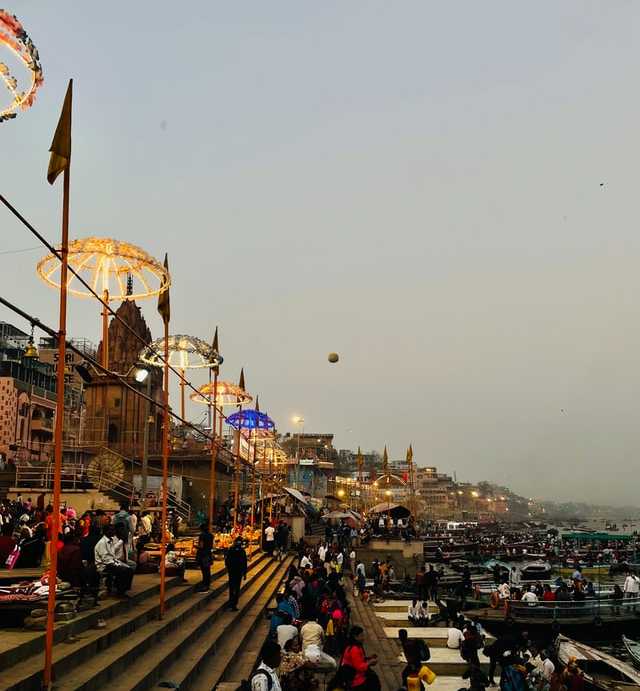
Kashi State and Kashi Naresh
Varanasi became an independent Kashi state in the 18th century and under subsequent British rule, it was a major trading and religious center. In 1910, the British administration made Varanasi a new Indian state and made Ramnagar its headquarters.
Kashi Naresh still lives in Ramnagar Fort. This fort is built on the banks of the Ganges in the east of Varanasi city. Another palace of the king of Kashi is Chait Singh Mahal. It was built by Maharaja Chait Singh near Shivala Ghat.
The Ramnagar Fort and its museum are now preserved as the historical heritage of the kings of Banaras and have been the official residence of the King of Kashi since the 18th century. Even today, Kashi is respected among the people of Naresh Nagar.
He is considered to be the religious president of the city and the people here consider him to be an incarnation of Lord Shiva. Naresh has been the chief cultural patron of the city and an integral part of all major religious activities.
Rivers of Varanasi
The extension of Varanasi or Kashi is said to be between the two confluences of the Ganges river, one with the Varuna river and the other with the Assi river.
The distance between these confluences is about two and a half miles. The circumambulation of this distance is called Panchkosi Parikrama in Hindus.
The yatra ends at the Sakshi Vinayak Temple. Many small and big rivers flow in the Varanasi region. Apart from Ganga, Banganga, Varuna, Gomti, Karmanasa, Gadai, Chandraprabha are prominent.
Varanasi is priceless from the point of view of archeology
There are 19 Archaeological surveys of Indian sites in Varanasi, including Aghor Peeth, Alamgir Mosque, Ashoka Pillar, Bharat Kala Bhavan, Bharat Mata Mandir, Central University of Tibetan Studies, Dhanwantri Temple, Durga Mandir, Jantar Mantar, Kashi Vishwanath Temple, Sankat Mochan Hanuman Mandir. , Mahatma Gandhi Kashi Vidyapeeth, Shri Vishwanath Temple to BHU Campus, Ramnagar Fort, Ghats of Banaras, and Tulsi Manas Temple.
Ghats of Varanasi
Most of the ghats of Varani have been built by different kings. These include Marathas, Scindias, Holkars, Bhonsle’s, and Peshwas.
It is because of these ghats that the beauty of the morning of Banaras is told everywhere. Dashashwamedh Ghat is the oldest Ghat of Varanasi. It is close to Kashi Vishwanath temple. At the same time, Manikarnika Ghat is a crematorium. It has a special place in Hindu beliefs.
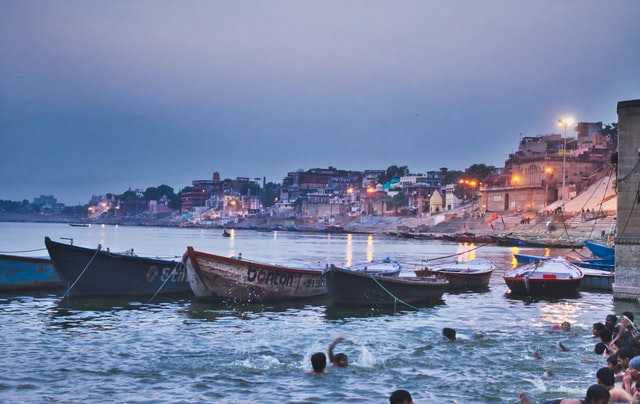
Kashi Vishwanath Temple
Kashi Vishwanath Temple has a special place among about 23000 temples of Varanasi. This temple is one of the holy 12 Jyotirlingas of Hinduism. This temple was broken by many invaders and it was rebuilt many times. Along with the temple is the Gyanvapi Mosque.
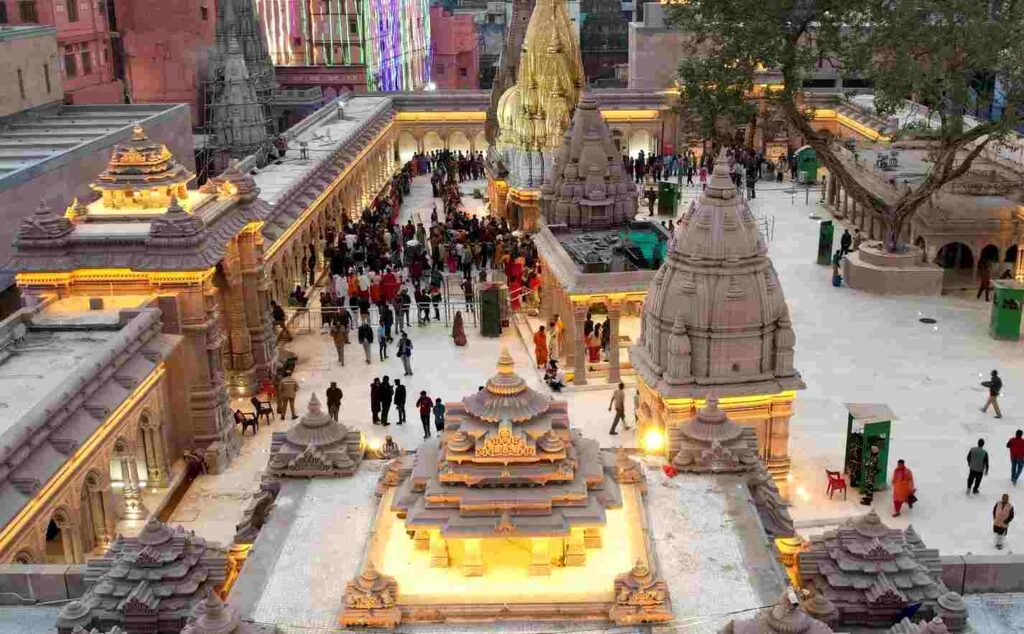
It is said that the mosque has been built on the original site of the temple itself. The temple that stands today was built in 1780 by Ahilyabai Holkar of Indore. Here in 1839, Maharaja Ranjit Singh of Punjab donated gold.
The Gyanvapi Mosque was built by the Mughal ruler Aurangzeb by breaking the temple. Apart from this, there is Alamgiri Mosque, which was also built by Aurangzeb by breaking the temple.
Assi Ghat in Varanasi
Assi Ghat is believed to be the place where the great poet Tulsidas died. The Southern Ghats of this place are most popular among tourists. The number of people visiting this place every day keeps on increasing every hour and during festivals, this number increases even more.
Assi Ghat is situated at the confluence of the Assi and Ganga rivers and is famous for the large Shiva Lingam installed under a Peepal tree. This ghat has immense religious significance and has been mentioned in the Puranas and many other things as well.
Assi Ghat is the heart of Varanasi and the locals, as well as tourists, come there to enjoy the wonderful view of sunset and sunrise in the Ganges. The ghat has been a famous place among the local youth to spend time in the evening. The morning aarti of the ghat is very spectacular, though you have to get up early in the morning to see it.
Sankat Mochan Hanuman Mandir
Sankat Mochan Hanuman Temple is located on the banks of the river Assi and was built by the freedom fighter Pandit Madan Mohan Malviya in the 1900s. It is dedicated to Lord Rama and Hanuman.
Varanasi has always been associated with the Sankat Mochan Temple and is an essential part of this holy city. Every person who comes to Varanasi visits this temple and definitely has a darshan of Hanuman.
The laddus offered in this temple are essentially famous among the locals. While visiting Sankat Mochan, beware of the monkeys who come into the temple premises and steal the prasad.
New Vishwanath Temple
Located inside the Banaras Hindu University, this temple is visited by tourists daily. The Birla family, which has been a hugely successful group of entrepreneurs in India, started its construction.
One of the great things about the temple is that it is not just one building, but is actually seven separate temples that together form one big religious complex. One of the most revered temples of Varanasi, this beautiful temple is a must-visit for you.
Dashashwamedh Ghat Varanasi
As the name suggests, it is believed that this is the place where Lord Brahma performed the Dasha Ashwamedha Yagya. This ghat is a religious place and various rituals are performed here.
This ghat is most famous for the Ganga Aarti held every evening, and hundreds of people visit it every day. Watching Ganga Aarti is an experience that cannot be described in words. Whether you are coming to Varanasi alone or going with family, do not miss to see the view of this ghat.
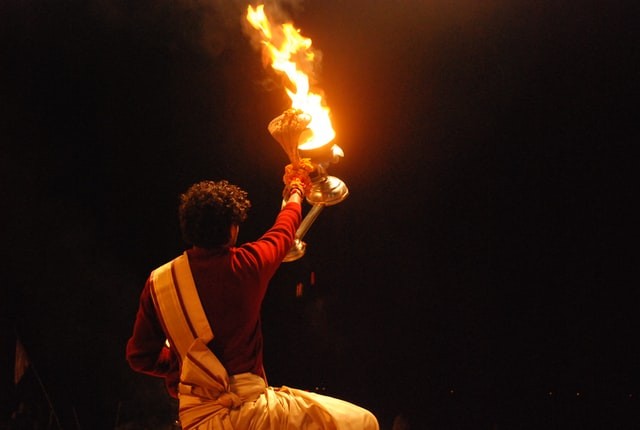
Varanasi Corridor
On 13 December 2021, PM Modi inaugurated the Varanasi Corridor in Varanasi, which added to the beauty and fame of Kashi. The foundation of this corridor was laid by the PM on March 8, 2019, with a view to preserve the cultural heritage here and provide proper facilities to the devotees.
About Rs 700 crore has been spent on this project. Although Varanasi is always in discussion on the global stage due to its religious importance, but the Kashi Vishwanath Corridor had brought Kashi to the center of all the discussions. Through this corridor, Prime Minister Narendra Modi has given a grand look at the temple complex of Baba Kashi Vishwanath. Through this corridor, Maa Ganga has been directly connected with Baba Vishwanath.
Preface
Kashi is one of the 7 holy cities of Hinduism, Varanasi was originally from Ghats Mandir.
Other names for Varanasi
Apart from Varanasi and Kashi, this historical religious city is also known by other names, some of which are as follows-
- city of temples
- the religious capital of India
- city of lord shiva
- city of lights
- city of knowledge
- Vimitka
- Anandakana
- Mahasana
- Surandhan
- Brahma Vardha
- Sudarshan etc.
famous things of Varanasi
Friends, if you went to Banaras and did not shop there, did not eat the food there, then believe that your journey remained incomplete. As much as Banaras is famous for its religious importance, it is also famous for the things sold in its market. We are listing down some of the world-famous things of Banaras markets, whenever you go to Varanasi, do not forget to take them and taste them.
- banarasi silk saree
- brocade
- banarasi paan
- malai puri
- banarasi thandai
- Tea
- rare lassi
- Shortbread and Jalebi
- cream sweets
- bati sharpener etc.
Major Temples of Varanasi
Kashi or Varanasi is such a religious city which is also known as the city of temples, here a temple is found at the crossroads of almost every street. Around 2300 temples are situated here, including a total of small and big temples. Some of these major temples are as follows-
1) Kashi Vishwanath Temple
It is also known as Golden Temple, its present form was constructed by Ahilya Bai Holkar in 1780. One of the 12 Jyotirlingas of Lord Shiva sits in this temple.
2) Durga Mata Temple
Also known as Monkey Temple due to the presence of monkeys around this temple, the construction of this temple is believed to be around the 18th century. At present, it is believed that Maa Durga had manifested herself in this temple. This temple was built in Nagara style.
3) Sankat Mochan Temple
Dedicated to Hanuman, a devotee of Lord Shri Ram, this temple is very popular among the local people, and many types of religious and cultural programs are organized here annually. Three blasts were carried out by terrorists in the same temple complex on 7 March 2006.
4) Vyas Temple
There is a legend behind this temple located in Ramnagar. Once Vyas Ji was roaming around in this city for a long time but he did not get any kind of donation anywhere, because of this, Beas Ji was going to curse the whole city, only then did Lord Shiva and Parvati Mata get together. Coming in the guise of a couple, they donated a lot, then Beas Ji forgot about the curse. After this Lord Shiva barred Beas Ji from entering this canal, to solve this, Beas Ji resided on the other side of the Ganges where he still has his temple in Ramnagar.
5) Mani Temple
The Mani temple, located in the Dharmasangh complex, the shrine of Karpatri Maharaj, was dedicated to the devotees on 28 February 1940. A symbol of the unity of Shaivism and Vaishnavism, this temple is open to people of all religions. The most important thing about this temple is that there is a row of 151 Narmadeshwar Shivlings.
Other Historical Places in Varanasi
- Banaras Hindu University
- Mahatma Kashi Vidyapeeth
- Sampurnanand Sanskrit University
- Central Institute of Higher Tibetan Studies
- Hindu religious places
- Buddhist sites
- Jain religious places
- Sant Ravidas Temple and others
- Number of Ganga Ghats in Kashi
The city of Varanasi, situated on the banks of the Ganges river, has a total number of ghats around 100, some of which are as follows-
- Assi Ghats,
- Prahlad Ghat
- Rani Ghat
- Bhainsasur Ghat
- Raj Ghat
- Chowki Ghat
- Pandey Ghat
- Digapatiya Ghat
- Darbhanga Ghat
- Munshi Ghat
- Nala Ghat
- new pier
- Chausatti Ghat
- Rana Mahal Ghat
- Gangamahal Ghat
- Rewan Ghat
- Tulsi Ghat
- Bhadaini Ghat
- Janki Ghat
- Mata Anandmayi Ghat
- Jain Ghat
- Panchkot Ghat
- Prabhu Ghat
- Chet Singh Ghat
- Arena Ghat
- Niranjani Ghat
- Nirvani Ghat
- Shivala Ghat
- Gularia Ghat
- Dandi Ghat
- Hanuman Ghat
- Ancient Hanuman Ghat
- Kshemeshwar Ghat
- Mansarovar Ghat
- Narad Ghat
- Raja Ghat
- Ganga Mahal Ghat
- Mysore Ghat
- Harishchandra Ghat
- Lali Ghat
- Vijayanaram Ghat
- Kedar Ghat
- Ahilyabai Ghat
- Sheetla Ghat
- Prayag Ghat
- Dashashwamedh Ghat
- Rajendra Prasad Ghat
- Manmandir Ghat
- Bhonslo Ghat
- Ganesh Ghat
- Ramghat Ghat
- Jatar Ghat
- Gwalior Ghat
- Balaji Ghat
- Panchganga Ghat
- Durga Ghat
- Brahma Ghat
- Bundi Parkota Ghat
- Sheetla Ghat
- Lal Ghat
- cow ghat
- Badri Narayan Ghat
- Trilochan Ghat
- Tripura Bhairavi Ghat
- Mirghat Ghat
- Lalita Ghat
- Manikarnika Ghat
- Scindia Ghat
- Sankatha Ghat
- Gangamahal Ghat
- Nandeshwar Ghat
- Telianala Ghat
- Adikeshava or Varuna Sangam Ghat, etc.
How to Reach Varanasi?
Varanasi is a city that is well connected by air, rail, and road from major and major cities (like Jaipur, Mumbai, Kolkata, Pune, Gwalior, Ahmedabad, Indore, Chennai, Bhopal, Jabalpur, Ujjain and New Delhi, etc.).
Air transportation
Babatpur, about 25 km from Varanasi, has an international airport (Lal Bahadur Shastri Airport), which connects Varanasi to major cities of the country as well as abroad.
Rail transport
Varanasi Junction under Northern Railway in Banaras and Deendayal Upadhyay Junction under East Central Railway and Banaras Railway Station (Manduadih Railway Station) is situated in the middle of CT, through which Varanasi is connected by railway route from all over India.
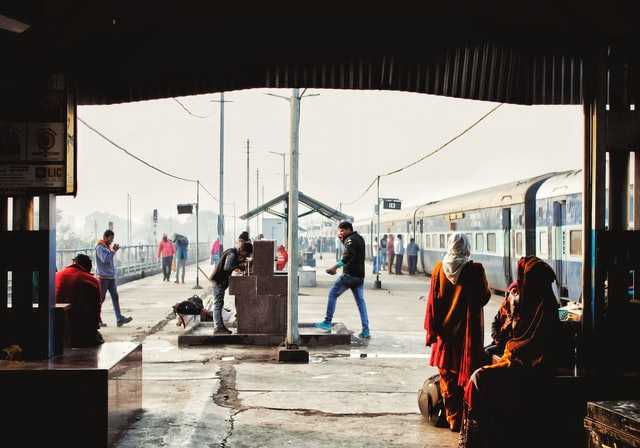
Road transport
The Delhi Kolkata Road (NH2) passes through Varanasi city. Apart from this, India’s longest highway NH-7 connects Varanasi with Jabalpur, Nagpur, Hyderabad, Bangalore, Madurai, and Kanyakumari.
Public transport
Auto rickshaw, cycle-rickshaw, minibus, etc. facilities are available to travel on the roads of Varanasi and small boats and steamers are used to enjoy the cool stream of Mother Ganga.
1 thought on “Varanasi City of temples”